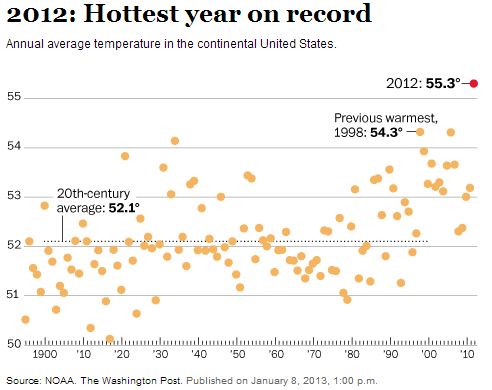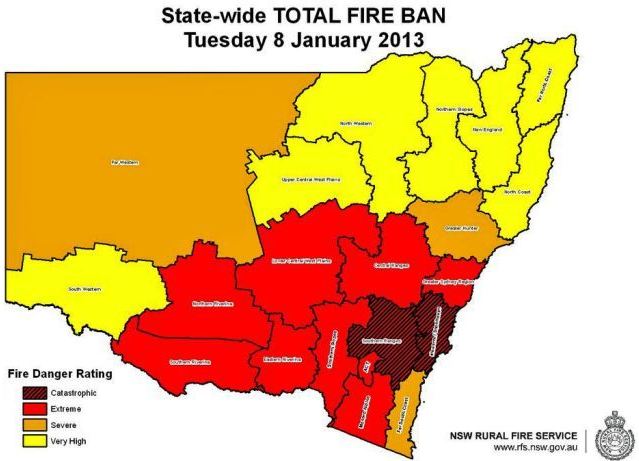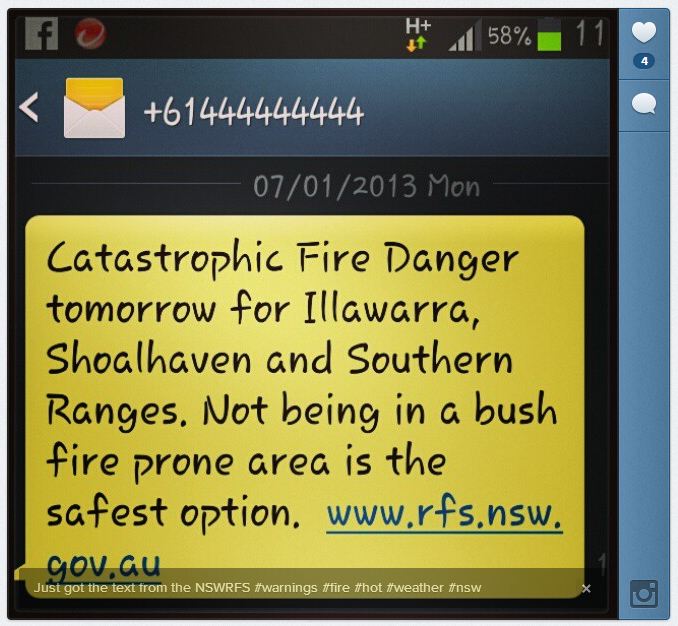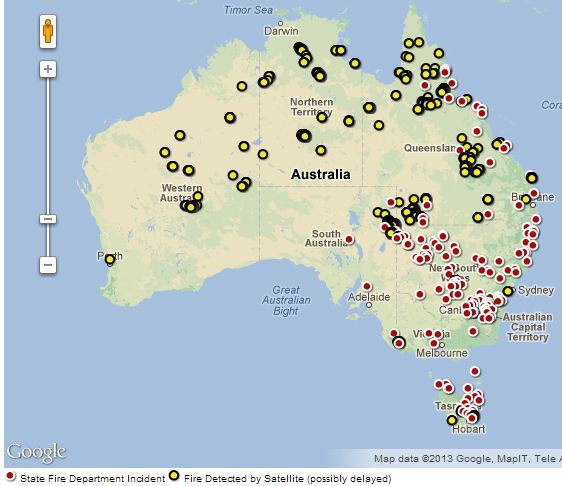If you are one of the 18 remaining climate change deniers, you should stop reading now, because what follows will make you uncomfortable.
Northern Hemisphere:
 The National Oceanic and Atmospheric Administration (NOAA) is reporting that last year was the hottest on record for the contiguous United States,
The National Oceanic and Atmospheric Administration (NOAA) is reporting that last year was the hottest on record for the contiguous United States, shattering CRUSHING by a wide margin the previous record set in 1998. The average temperature of 55.3 degrees Fahrenheit was 1 degree above the previous record and 3.2 degrees higher than the average for the 20th century. That is a huge difference.
From the Washington Post:
Last year’s record temperature is “clearly symptomatic of a changing climate,” said Thomas R. Karl, who directs NOAA’s National Climatic Data Center. Americans can now see the sustained warmth over the course of their own lifetimes — “something we haven’t seen before.” He added, “That doesn’t mean every season and every year is going to be breaking all-time records, but you’re going to see this with increasing frequency.”
Southern Hemisphere:
Extremely high record-breaking temperatures and “catastrophic” fire danger ratings in Australia are not only contributing to the rapid spread of numerous bush fires, but they may cause some electronic gadgets to stop working. According to Wired, Apple advises that an iPhone should not be used when temperatures reach 95F (35C). In Sydney yesterday the high was 108F (42C).
The extreme weather is also causing problems for meteorologists when they attempt to display the highest ever recorded temperatures on their standard maps.
From Wired:
Australia’s Bureau of Meteorology had to add new colors to its weather map. Now, those unfortunate parts of Australia that achieve temperatures above 122ºF (50ºC) — temperatures that were, until recently, literally off the scale — will be marked in deep purple and terrifying hot pink. It is an interesting moment in data visualization history when climate scientists find themselves in the position of revising the upper bounds of temperatures they ever expected to depict.
It is possible that our electronics and our infrastructure were designed for a climate that we no longer have. When the streets and buildings of lower Manhattan were built, no one expected that they would be flooded by a hurricane. Apple did not design the iPhone for the recent weather in Australia.
Thanks go out to Clyde, Kelly, and Dick









